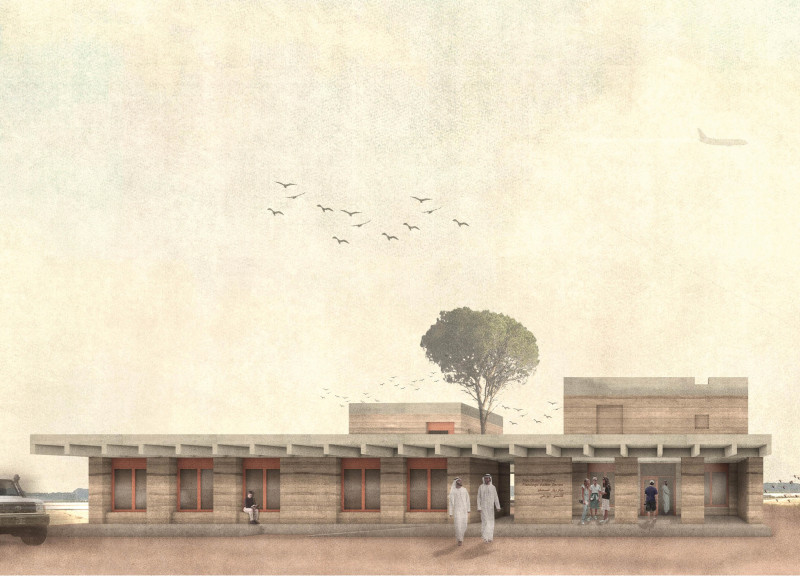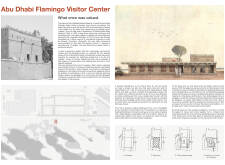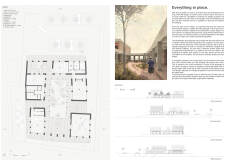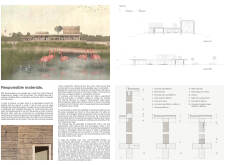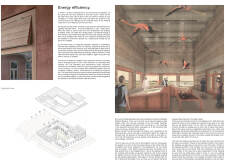5 key facts about this project
The Abu Dhabi Flamingo Visitor Center exemplifies a modern architectural approach that prioritizes ecological integration and user engagement. Nestled within the Al Wathba Wetland Reserve, this facility serves as an educational resource, facilitating interaction between visitors and the natural environment, particularly focused on the region's avian population. The project is designed to foster awareness and appreciation of the wetland's ecological significance while providing a functional space for education and observation.
Sustainable Materials and Energy Efficiency
The architectural design employs rammed earth as its primary material, reflecting a commitment to sustainability and local resources. This choice not only contributes to the building's thermal performance, enhancing energy efficiency, but also emphasizes a connection to the surrounding landscape. The thermal mass of the rammed earth walls mitigates indoor temperature fluctuations, decreasing reliance on energy-intensive cooling systems. In addition, the project integrates passive cooling strategies through natural ventilation, optimizing indoor air quality and comfort. The use of concrete core activation allows for ambient temperature control, effectively supporting the facility’s intended role as a year-round visitor center.
User-Centric Design and Community Engagement
The Abu Dhabi Flamingo Visitor Center is characterized by its thoughtful spatial arrangement and user-focused design. The interior layout promotes fluid movement, guiding visitors through educational exhibits and observation decks that enhance their engagement with the environment. Engagement with the local community is a significant aspect of the project, as it fosters a sense of ownership and connection to the ecological site. Traditional Emirati architectural elements are incorporated into the design, creating a dialogue between cultural heritage and contemporary aesthetics.
The building's unique geometric form disrupts conventional visitor center designs, allowing for an organic integration with the natural topography. By adopting a design that resonates with both the ecological and cultural narratives of the region, the visitor center serves more than a functional purpose; it aims to deepen the understanding of the wetlands and promote conservation efforts.
In summary, the Abu Dhabi Flamingo Visitor Center illustrates a considered architectural approach that integrates sustainable practices with educational objectives. To gain deeper insights into the project's architectural plans, sections, designs, and ideas, explore the full presentation of this noteworthy project.


